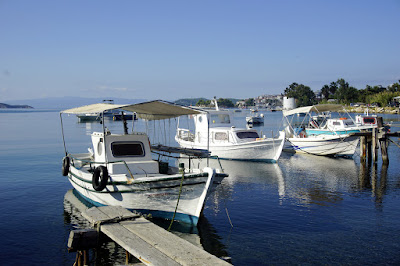An extract from North Ronaldsay, Orkney Blog - 16th October 2019.
“A fantastic day with birds everywhere, massive flocks of Thrushes moving across the island throughout the day; the huge rolling flocks of Redwings filling every field, coming in off the sea and dropping vertically out of the sky was something else! No real rarities were unearthed but it didn’t matter one jot with everyone just revelling in the spectacle unfolding in front of them; totals (largely underestimates) comprised 11 Herons, 3 Hen Harriers, 2 Merlin, 3 Jack Snipe, 283 Snipe, 13 Woodcock, 5 Short-eared Owls, 320 Robins, 2 Black Redstarts, 3 Redstarts, a Wheatear, 11 Ring Ouzels, 315 Blackbirds, 257 Fieldfare, 1,197 Song Thrush, 10,977 Redwing, 2 Mistle Thrushes. A brilliant day for the ringers with a total of 381 birds processed through the day”.
Meanwhile on Saturday 19 October it was back to reality at Oakenclough where birding on North Ron’s scale is beyond our wildest dreams and ringing sessions mostly sedate. Chalk and Cheese spring to mind.
I drove through patches of mist for our 0630 start. When I arrived fog enveloped the ringing station and stayed there for the first hour and more. Through the fog a few Redwings arrived and the first six birds to find the nets were Redwings.
Slowly the rising sun burnt through the low cloud and by 0900 we were in bright sunshine.
Visible migration today was stuttering with a piecemeal arrival of thrushes and finches until we packed in at 1120.
Approximates - 125 Redwing, 40 Fieldfare, 10 Blackbird, 45 Chaffinch, 35 Goldfinch 20 Lesser Redpoll, 6 Greenfinch, 18 Woodpigeon.
32 Birds caught - 9 Goldfinch, 8 Lesser Redpoll, 6 Redwing 4 Chaffinch, 3 Coal Tit, 1 Blackbird, 1 Great Tit.
Lesser Redpoll - adult male
Lesser Redpoll - adult male
Chaffinch - first year male
Redwing
Redwing
Redwings are smaller than one might imagine, slighter than a Blackbird, slimmer than a Song Thrush and the perfect size to fit in the palm of the hand. We fit a size "CC" ring on a Redwing and the larger "C" ring on a Blackbird.
Although Oakenclough is woodland edge habitat we catch very few Blackbirds. The young male today was a first year bird and almost certainly a migrant rather than a local bird.
Blackbird
We received more information about a ringed Lesser Redpoll, ARC5449 caught here at Oakenclough on 14 October 2019. The latest news told us that it was first caught and ringed at Ramsley Reservoir, Derbyshire, UK on 14 December 2018. The quite late date in December suggests that this particular redpoll, an adult male, might be a fairly sedentary individual able to winter in more sheltered areas of Britain rather than a traveller to more distant shores. A ringing recovery like this often raises more questions than it answers.
Lesser Redpoll - Ramsley Reservoir, Derbyshire to Oakenclough
More news and pictures soon from Another Bird Blog.
Linking this post to Anni's Birding Blog.




































































.jpg)












